Serving 24 students in grades 7-8, Bainville 7-8 ranks in the top 50% of all schools in Montana for overall test scores (math proficiency is top 50%, and reading proficiency is top 50%).
The percentage of students achieving proficiency in math is 40-59% (which is higher than the Montana state average of 35%). The percentage of students achieving proficiency in reading/language arts is 40-59% (which is approximately equal to the Montana state average of 46%).
The student:teacher ratio of 6:1 is lower than the Montana state level of 12:1.
Minority enrollment is 8% of the student body (majority Hispanic), which is lower than the Montana state average of 23% (majority American Indian).
Quick Stats (2025)
- Grades: 7-8
- Enrollment: 24 students
- Student:Teacher Ratio: 6:1
- Minority Enrollment: 8%
- Overall Testing Rank: Top 50% in MT
- Math Proficiency: 40-59% (Top 50%)
- Reading Proficiency: 40-59% (Top 50%)
- Science Proficiency: <50% (Top 30%)
- Source: National Center for Education Statistics (NCES), MT Dept. of Education
School Overview
Bainville 7-8's student population of 24 students has declined by 22% over five school years.
The teacher population of 4 teachers has grown by 100% over five school years.
Grades Offered
Grades 7-8
(Supplemental Virtual)
(Supplemental Virtual)
Total Students
24 students

Gender %
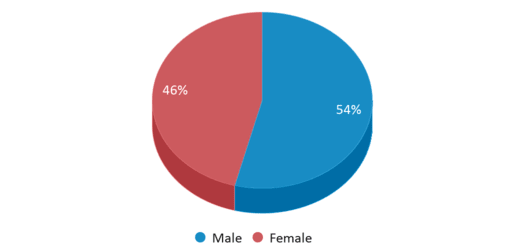
Total Classroom Teachers
4 teachers
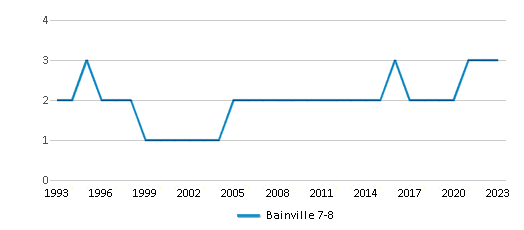
Students by Grade
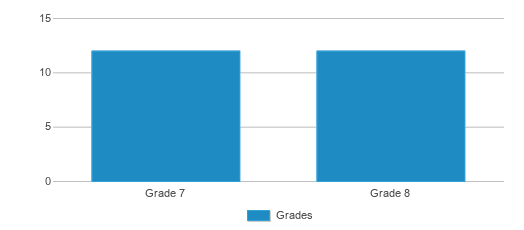
School Rankings
Bainville 7-8 ranks within the top 50% of all 722 schools in Montana (based off of combined math and reading proficiency testing data).
The diversity score of Bainville 7-8 is 0.15, which is less than the diversity score at state average of 0.40. The school's diversity has stayed relatively flat over five school years.
Overall Testing Rank
#313 out of 722 schools
(Top 50%)
(Top 50%)

Math Test Scores (% Proficient)
40-59%
35%
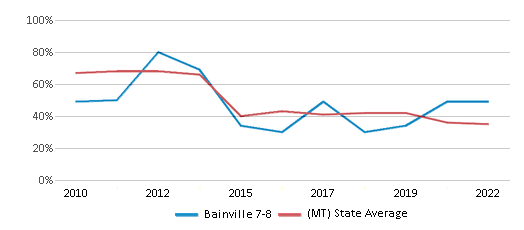
Reading/Language Arts Test Scores (% Proficient)
40-59%
46%
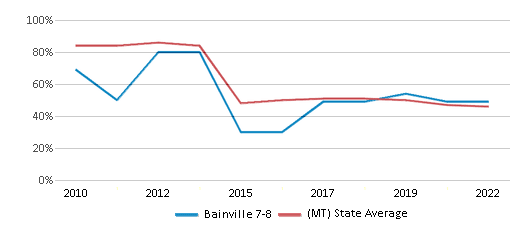
Science Test Scores (% Proficient)
<50%
37%
Student : Teacher Ratio
6:1
12:1
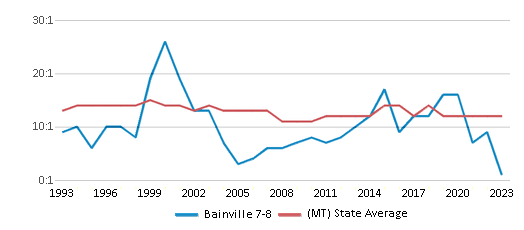
American Indian
n/a
10%
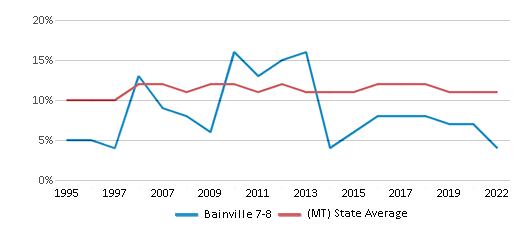
Asian
n/a
1%
Hispanic
8%
6%

Black
n/a
1%
White
92%
77%

Hawaiian
n/a
n/a
Two or more races
n/a
5%
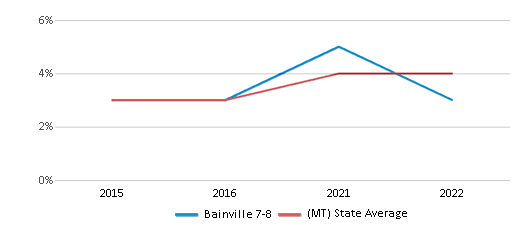
All Ethnic Groups
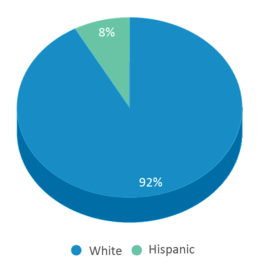
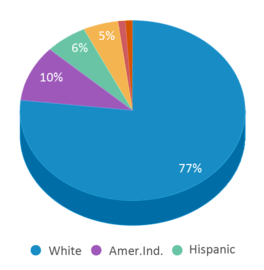
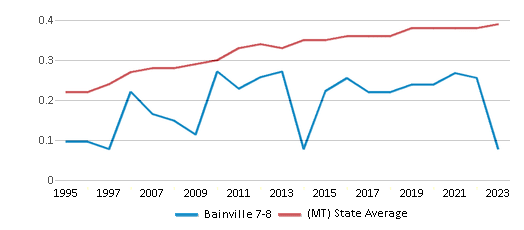
Participates in the National School Lunch Program (NSLP)
Yes
Eligible for Free Lunch
21%
42%
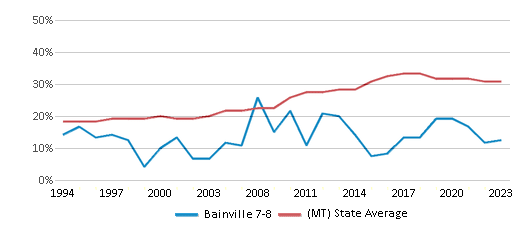
Eligible for Reduced Lunch (19-20)
3%
6%
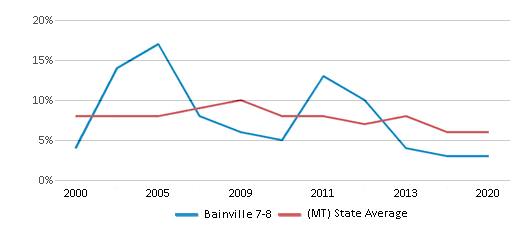
School Statewide Testing
School District Name
Source: National Center for Education Statistics (NCES), MT Dept. of Education
Profile last updated: 02/09/2025
Frequently Asked Questions
What is Bainville 7-8's ranking?
Bainville 7-8 is ranked #313 out of 722 schools, which ranks it among the top 50% of public schools in Montana.
What percent of students have achieved state testing proficiency in math and reading?
40-59% of students have achieved math proficiency (compared to the 35% MT state average), while 40-59% of students have achieved reading proficiency (compared to the 46% MT state average).
How many students attend Bainville 7-8?
24 students attend Bainville 7-8.
What is the racial composition of the student body?
92% of Bainville 7-8 students are White, and 8% of students are Hispanic.
What is the student:teacher ratio of Bainville 7-8?
Bainville 7-8 has a student ration of 6:1, which is lower than the Montana state average of 12:1.
What grades does Bainville 7-8 offer ?
Bainville 7-8 offers enrollment in grades 7-8 (Supplemental Virtual).
What school district is Bainville 7-8 part of?
Bainville 7-8 is part of Bainville K-12 Schools School District.
School Reviews
Review Bainville 7-8. Reviews should be a few sentences in length. Please include any comments on:
- Quality of academic programs, teachers, and facilities
- Availability of music, art, sports and other extracurricular activities
Recent Articles

How To Guide: Parent-Teacher Conferences
Communicating early and often with your child’s teacher is an important aspect of ensuring your child has the best possible education. Yet, sometimes parent-teacher conferences can be stressful for a variety of factors. In this article we provide a how-to guide for making the most out of your parent-teacher conference experience.

How the Arts Benefit Your Children Academically and Behaviorally
Often underfunded in the past, the arts are gaining a resurgence in support as research shows benefits for children academically, along with improvements in behavior and attendance.

How Scaffolding Could Change the Way Your Child Learns
This article explores the concept of instructional scaffolding, a teaching method that enhances learning by breaking down complex tasks into manageable parts. It highlights how scaffolding supports students in developing critical thinking skills and becoming more independent learners. The article discusses the benefits of scaffolding, including improved engagement and reduced anxiety, and provides strategies for its implementation across various educational levels.





